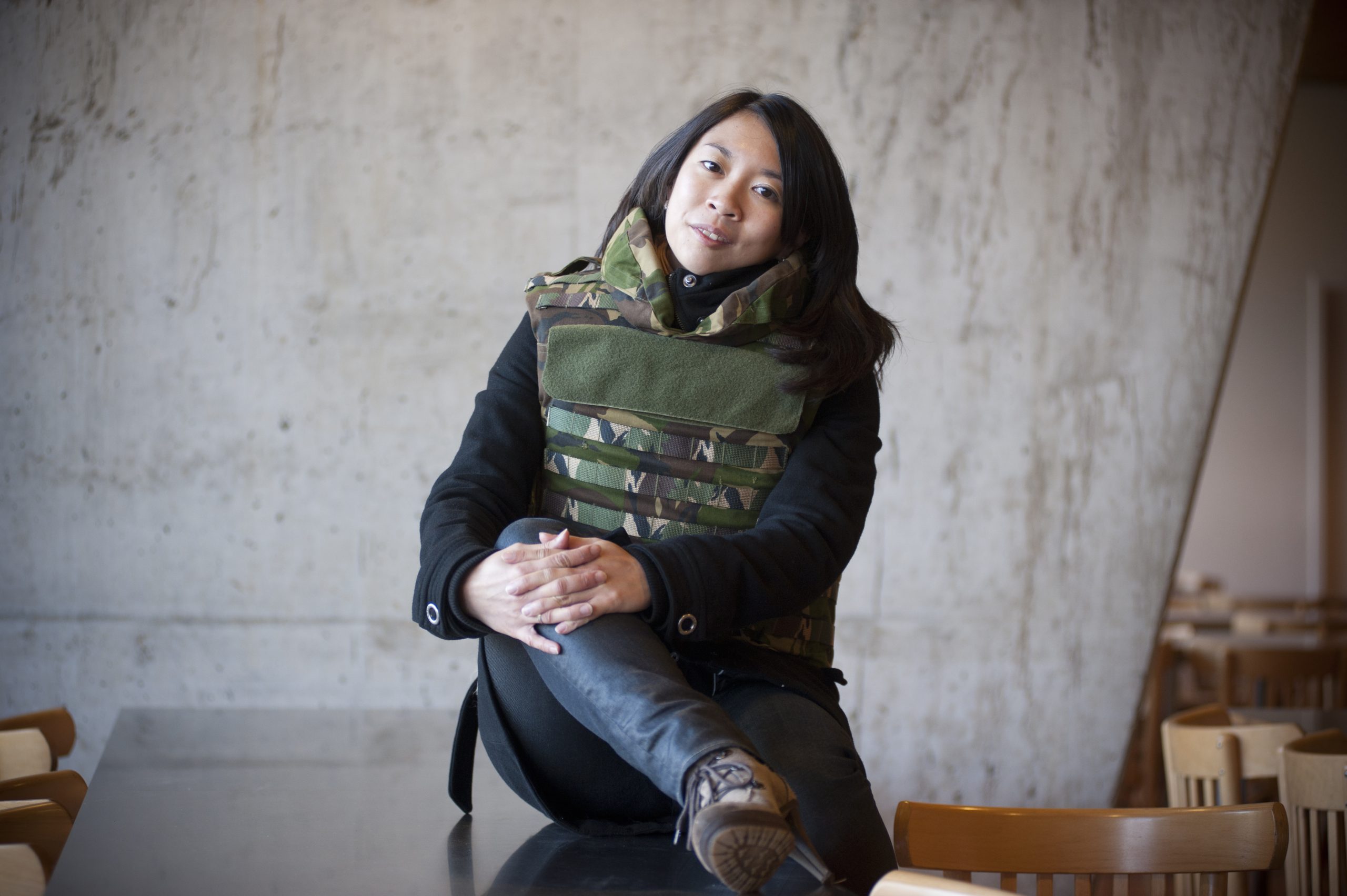Ballistic vests and other stuff made of fiber reinforced armor materials can be made stronger if one truly understands what happens inside the material during impact. Dr Béate Heru Utomo used a high speed camera to study just that.
Her grandfather was in the military, and this prompted Béate Heru Utomo to also do something for the armed forces. “But I didn’t want to be a soldier,” she says. Instead, she sought an alternative, and, after graduating from the faculty of Aerospace Engineering, decided to do a PhD on armored materials. From her car she pulls out an armored vest made of a fiber reinforced material called, Dynema, which she is about to return to TNO, the research institute with which she collaborated. “These vests are very heavy,” she sighs. “With more insight into the processes that occur within the material during an impact event, it will become easier to make them stronger and lighter.”
Heru Utomo, who defended her thesis this week at the MMME faculty, shot small projectiles (a kind of bullets) at Dyname fibres, studying the effects with high speed cameras.
“One of my important findings is that the filaments slide alongside one another when a bullet perforates the material,” she explains. “They turn out to have more freedom of movement than was previously thought. And the fibers also seem to be stiffer and stronger than is assumed in current models. When you pull slowly on the material it has a stiffness of 120 gigapascal, but when you shoot a bullet at it with a velocity of 500 metres per second, the stiffness is much higher, namely 200 gigapascal. Previously it was thought that it had a stiffness of 160 gigapascal.”
Heru Utomo also looked at the edges of the bullet holes to see whether these showed marks of scorching. She hardly found any marks, thus concluding that the material doesn’t heat up very much when hit, and that this also doesn’t weaken it. She used the insights she gained from these experiments to develop new numerical models.
Ze zijn niet alleen mooi, ze hebben ook nog hersens, de twaalf studenten werktuigbouwkunde die dit jaar poseerden voor de Women in Technology kalender. Het initiatief komt van Dosign Engineering, dat wil laten zien dat vrouwen in de techniek toekomst hebben. Op de foto ‘decembermeisje’ Yonna Welchen.



Comments are closed.